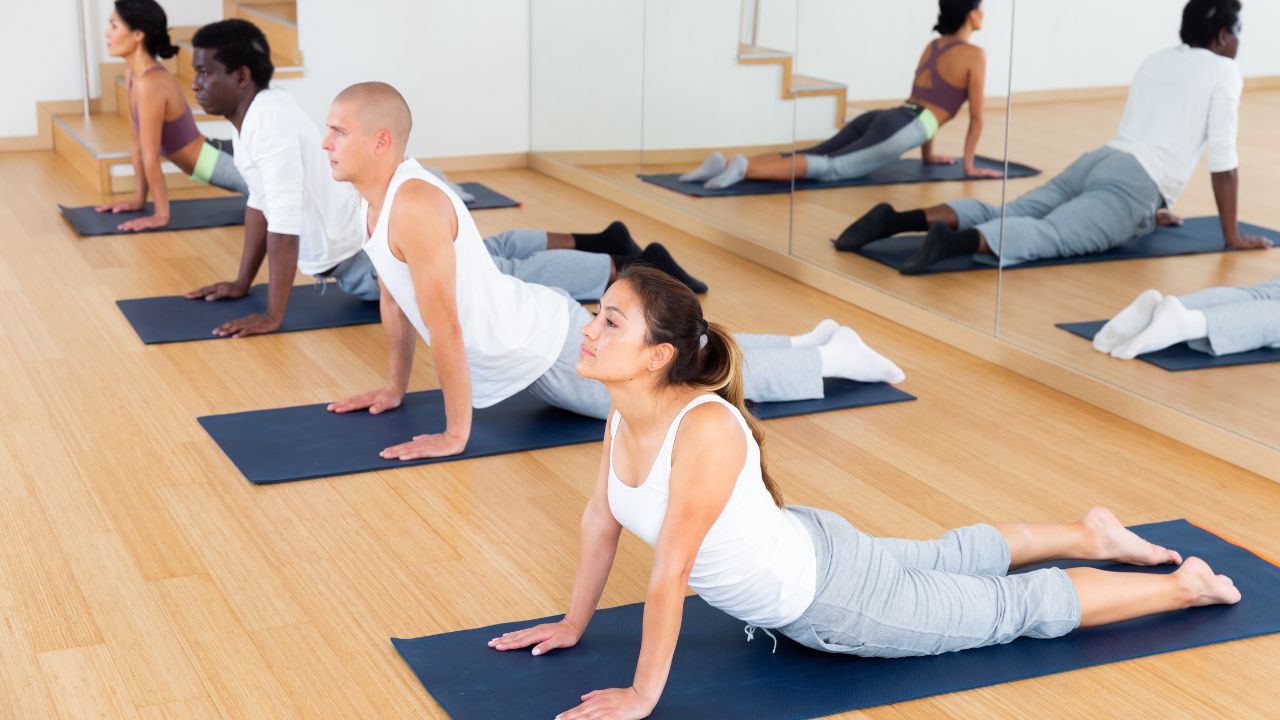Hatha-Yoga

Hatha Yoga is a branch of yoga that focuses on physical postures (asanas), breathing techniques (pranayama), and meditation. The word “Hatha” is derived from the Sanskrit words “ha” (meaning sun) and “tha” (meaning moon), symbolizing the union of opposites and the balance of opposing forces within oneself.
Hatha Yoga aims to create harmony and balance between the body and mind. It provides a foundation for other yoga styles and practices. While it incorporates physical postures, it also emphasizes the breath and awareness.
In a typical Hatha Yoga practice, you can expect:
- Asanas (Physical Postures): Hatha Yoga includes a variety of asanas, ranging from standing poses to seated poses, forward bends, backbends, twists, balances, and inversions. These postures are designed to strengthen and stretch the body, improve flexibility, and promote balance and alignment.
- Pranayama (Breathing Techniques): Hatha Yoga incorporates various breathing techniques to cultivate breath awareness and control. Examples of pranayama techniques include deep belly breathing (diaphragmatic breathing), alternate nostril breathing (Nadi Shodhana), and Ujjayi breathing (Victorious Breath).
- Meditation and Mindfulness: Hatha Yoga often includes periods of meditation or mindfulness practice to cultivate a calm and focused mind. This may involve focusing on the breath, observing sensations in the body, or practicing visualization techniques.
- Relaxation and Savasana: Each Hatha Yoga practice typically ends with a period of deep relaxation, often in the form of Savasana (Corpse Pose). This allows the body and mind to integrate the benefits of the practice and promote overall relaxation and rejuvenation.
Hatha Yoga can be practiced by people of all ages and fitness levels. It offers numerous benefits, including improved strength, flexibility, balance, posture, and stress management. Regular practice of Hatha Yoga can also help enhance body awareness, promote relaxation, and cultivate a sense of overall well-being.
It’s important to approach Hatha Yoga with mindfulness, respect for your body’s limitations, and a focus on proper alignment and technique. If you’re new to yoga or have any specific health concerns, it’s advisable to learn from a qualified yoga instructor who can guide you in the practice and help you adapt the postures and techniques to suit your individual needs.
Specific Content Keywords : hatha yoga,hatha yoga poses,hatha yoga near me,hatha yoga meaning,hatha yoga definition,hatha yoga pradipika,hatha yoga benefits,hatha yoga vs vinyasa,hatha yoga for beginners,hatha yoga pradipika pdf,isha hatha yoga,hot hatha yoga,60 minute hatha yoga sequence pdf,isha hatha yoga teacher training,what’s hatha yoga,classical hatha yoga,vinyasa hatha yoga,raja yoga and hatha yoga,hatha flow yoga,hatha vinyasa yoga,hatha raja yoga,hatha hot yoga.

